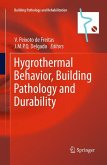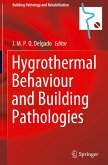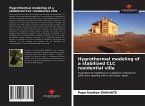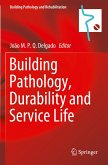Moisture accumulation within the material of a building envelope can lead to poor thermal performance of the envelope, degradation of organic materials, metal corrosion and structure deterioration. In addition to the building s construction damage, moisture migrating through building envelopes can also lead to poor interior air quality as high ambient moisture levels result in microbial growth, which may seriously affect human health and be a cause of allergy and respiratory symptoms. Furthermore, the moisture behavior of the building envelope is also an important aspect of the overall energy performance of a building, which has significant effect on the air-conditioning loads, especially the latent cooling load. Moisture problems in building materials are results of simultaneous heat and moisture transfer in building envelopes and indoor air. The scope of this book is to study the coupled heat and moisture transfer in building envelopes and its effect on the whole building energy performance and indoor comfort. The book mainly focuses on the modeling and experimental research of the hygrothermal transfer in building materials.
Bitte wählen Sie Ihr Anliegen aus.
Rechnungen
Retourenschein anfordern
Bestellstatus
Storno








